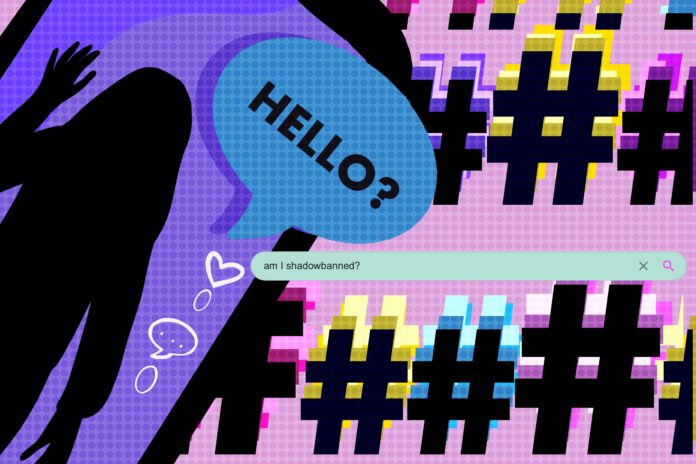It seems like everyone and their dog has a TikTok account nowadays. Whether they post content about baking, fashion, comedy skits, or politics—there is something for everyone.
One reality of posting on social media platforms is that the platform has the control to monitor the type of content that can stay published. However, some Black and LGBTQ+ content creators on TikTok have expressed concern about “shadow banning.”
To understand shadow banning, we need to understand that social media platforms use algorithms to deliver targeted content to specific audiences. When a user is shadowbanned, their content is overlooked by the algorithm and is not promoted—even to that user’s followers.
Unlike getting a message about a possible “community guideline violation” for content that is deemed inappropriate under the social media platform’s terms of use, shadow banning shows no such notification. In this case, creators don’t know that they are shadowbanned but recognize a significant decrease in engagement despite having a large or previously consistent following.
On May 28, tags #BlackLivesMatter and #GeorgeFloyd did not appear to have any videos posted to them, despite thousands of TikTok videos uploaded to the site with those tags.
Although there need to be some limitations to protect the public from hate speech, censoring and removing videos that talk about Black and LGBTQ+ issues is wrong.
We often hear many stories of BIPOC individuals speaking out about systemic racism and being punished for it. We saw it when NDP Leader, Jagmeet Singh, called out Quebecois MP, Alain Therrien, for racist conduct. Singh was removed from the House of Commons for the day for refusing to apologize for his “unparliamentary language.”
It might seem like TikTok shadow banning creators and Singh being removed are different issues, but they are not. Both deal with the same problem: the censorship of BIPOC individuals and the stripping of their abilities to speak up about racial issues.
The problem with this form of censorship is that when white people take a stand on racial issues they are congratulated and considered “brave.” During the height of the Minnesota riots, many white creators on TikTok took to the platform to show their support and were praised.
For example, TikTok creator Tony Lopez, who is not a member of the Black community, took a break from his dance videos to tell his fans that “Black lives do matter” and to “fill the comments with a fist and spread the positivity and love.” Many of his followers ate up his response, commenting fist and heart emojis. Many others called him out because of the minimal effort he put into his video.
At face value, his video seemed to have nothing wrong with it, yet his video and page lacked any resources to give more information about the Black Lives Matter movement.
On the contrary, Black creators who actually try to share information have their videos removed.
This is why the #BlackVoicesHeard hashtag was created to raise awareness about what is going on. The idea was that by starting this hashtag it would bring awareness to how censored BIPOC creators are.
Other creators use satire to get their message across regarding racial issues, yet they too face consequences from TikTok. Matt Saffen, a Black TikTok creator who speaks about racial injustice, spoke on his spam account about why his main account got suspended for seven days after he described an encounter with racist teens in his hometown.
The value of Black content must be measured equally. If we celebrate viral dances like the Renegade—created by Black creator Jalaiah Harmon—we must also listen to those speaking up about marginalized groups of people, talking about injustice, and sharing videos of peaceful protest.
Current social media platforms and users should fundamentally believe in uplifting Black creators, rather than using them as marketing tools when it’s convenient.
Speaking out against systemic racism is not something that Black people or anyone should be punished for through censorship. Being able to talk about your own experiences on social media is what connects people.
Featured graphic by Sara Mizannojehdehi.






